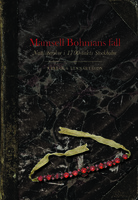Mamsell Bohmans fall
Nattlöperskor i 1700-talets Stockholm
| dc.contributor.author | Lennartsson, Rebecka | |
| dc.date.accessioned | 2019-12-17 11:55:33 | |
| dc.date.accessioned | 2020-04-01T09:21:31Z | |
| dc.date.available | 2020-04-01T09:21:31Z | |
| dc.date.issued | 2019 | |
| dc.identifier | 1006577 | |
| dc.identifier | OCN: 1135845527 | en_US |
| dc.identifier.uri | http://library.oapen.org/handle/20.500.12657/23568 | |
| dc.description.abstract | "One summer day in Stockholm in 1747, the carpenter's daughter Lena Cajsa Bohman faces trial for disobedience to her father. Soon, she admits to more serious crimes. A tangle of trafficking of young women is revealed. It develops into a story of power and greed, of secret networks and trade with young women. The protocols reflects women's circumstances in a time when all extra-marital sexuality was forbidden and the word prostitution was not used. In 18th century Stockholm, no distinction was made between prostitution and extramarital sexuality. All sexual intercourse outside of marriage was illegal for both women and men. Through the combination of a variety of material sources, from trial protocols to memoirs and hateful whore poems, we get a versatile picture of the commercial sexuality. The testimony of mamsell Bohman tells about how the trade was organized, who the profiteers, the women and the buying men were, where the trade took place and how women who provided sex för money were looked upon. The overall aim is to investigate how the whore stigma remains over centuries. The stigma is extremely adaptable and constantly accommodates to new cultural and social contexts, laws, values and established truths. It is intertwined with dominant notions of good and evil, of honor and contempt. During the 18th century, the whore stigma was not yet linked to payment for sex. It could affect all women, but was crossed by other hierarchical social orders. Despite a rigid legal stance and a strong social control, the boundaries were more permeable than they would later become. There was a striking discrepancy between law, jurisprudence and the verdict of the mob in 18th century Stockholm - a city where the bourgeois daughter Lena Cajsa was able to admit to relations with the notorious Lovisa von Plat and a number of illegitimate sexual relations, but escape punishment and marry into nobility." | |
| dc.language | Swedish | |
| dc.subject.classification | thema EDItEUR::D Biography, Literature and Literary studies::DN Biography and non-fiction prose::DNB Biography: general | en_US |
| dc.subject.classification | thema EDItEUR::N History and Archaeology::NH History::NHT History: specific events and topics::NHTB Social and cultural history | en_US |
| dc.subject.other | Stockholm | |
| dc.subject.other | Stigma | |
| dc.subject.other | Sexuality | |
| dc.subject.other | Urbanity | |
| dc.subject.other | Prostitution | |
| dc.subject.other | 18th century | |
| dc.title | Mamsell Bohmans fall | |
| dc.title.alternative | Nattlöperskor i 1700-talets Stockholm | |
| dc.type | book | |
| oapen.identifier.doi | 10.33819/kriterium.17 | |
| oapen.relation.isPublishedBy | 7b034f4a-b816-4718-88ac-63b24c8e4b24 | |
| oapen.relation.isbn | 9789170313165 | |
| oapen.pages | 353 | |
| oapen.place.publication | Gothenburg | |
| oapen.identifier.ocn | 1135845527 |

